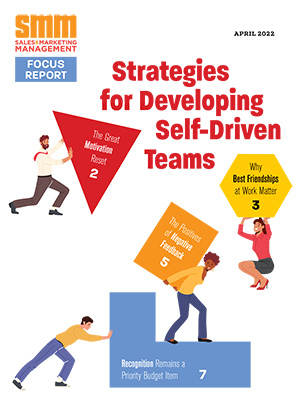Right around the time when most S&MM readers were preoccupied with Thanksgiving preparations, 10 heavily-armed Pakistani extremists were traveling from Karachi to India’s largest city, Mumbai. Ultimately, they would kill 173 people and injure 308 others at 10 different locations (including the Taj Mahal and Oberoi Trident hotels, along with the Jewish cultural center Nariman House). Among those killed, 30 were foreigners hailing from 10 countries; six were Americans and seven were Israelis.
In sheer casualties, the attacks in Mumbai represent the fourth largest act of global terrorism since the events of 9/11.
Although most Americans didn’t even know where Mumbai prior to the attacks, it is a city of 19 million, one of the most influential global financial centers and has the seventh largest number of billionaires in the world. The attacks are significant to S&MM‘s readers for two reasons: 1) Most Fortune 500 companies are represented there; and 2) any company that operates in Asia or India either travels to Mumbai, or is directly affected by business ramifications occurring there.
Factual conclusions
• U.S. intelligence had shared with its Indian counterparts a month before the attacks that there was a potential for a maritime-borne terrorist operation in Mumbai. Reportedly, security in Mumbai was stepped up…but then relaxed a week later, leaving targets vulnerable.
• The government of India (has organizational weaknesses in its police and intelligence structure that inhibit time-perishable threat analysis and intra-governmental coordination. Furthermore, the GOI failed to conduct the necessary threat and vulnerability assessments after receiving the U.S. warning, and also erred in not surveilling the Port of Mumbai with plainclothes officers. Of course, strained relations with Pakistan also made effective pre-attack liaison very difficult.
• Although there were news reports that the terrorists specifically targeted Americans and Britons, this presumption was ruled out given that only one British national and five Americans were killed. Moreover, the foreigner-rich Marriott, Hilton and Four Seasons hotels were ignored as targets. The two hotels that were attacked were historic Indian icons.
• There has been no definitive linking of the attacks to the Pakistan-based Lashkar-e-Taiba, Deccan Mujahideen (which claimed responsibility for the attacks) or groups concerned with struggle for control of Kashmir. An al-Qaeda controlled attack is unlikely, due to al-Qaeda preference for vehicular bombs, as compared to small arms attacks.
• The 10 Pakistani terrorists were all in their early 20s and were well trained. Collectively, they carried 5,000 rounds of ammunition, which suggests the carnage they had planned for. Toxicology reports suggest that most had consumed LSD and cocaine in preparation for the attack. Nine of the assailants were killed; one survived and is now in custody.
Tips for Safe Travel to Mumbai (or elsewhere)
• Go to www.travel.state.gov and research the security risks you will face in the country, or countries, you’ll be traveling to.
•Register your trip abroad with the U.S. State Department so they can reach you while you’re abroad, or in the event there is an emergency at home.
• Although Americans are still a terrorist target, the majority of victims from terrorist attacks carried out abroad have been local nationals.
•Regardless of the magnitude of the Mumbai attacks, there is still a greater likelihood of being a fire or crime victim in a hotel abroad than facing an act of terrorism. Consequently, I strongly recommend major international hotel chains that have proactive security deterrents and higher security awareness.
• Find out what cops look like in the country. Many foreigners approached the terrorists in Mumbai, thinking they were the police.
• Learn how to observe suspicious people (i.e., gunmen and suicide bombers carrying heavy explosive belts and hand-held triggers).
• When you register in your hotel, don’t provide more than basic personal information. Avoid the use of your position and home address.
• If you are in a country where terrorists have been active, select a hotel room below the fifth floor that is on the interior side of the hotel. This offers protection in the event of a car-bomb detonation occurring outside of the hotel.
• Always carry a small flashlight in your purse or briefcase. These can be invaluable when you’re in a hotel and the lights go out, or in the event of a security emergency.
• Never open your guest room door unless you know who is on the other side.
• If your employer has no plan for emergencies while you’re abroad, urge that they develop one.
Mumbai Quick Facts
1. Formerly Bombay, India’s financial capital.
2. One of the most influential business centers in the world.
3. World’s second-largest largest city proper.
4. World’s fifth-largest metropolitan area.
5. One of the highest cost of livings in the world for foreigners—a condo can cost $10,000 per square meter, and an apartment can run $10,000 a month.
6. Some 550 U.S. companies are members of the American Chamber of Commerce in India. (See www.amchamindia.com.) for Mumbai chapter information, contact Carolina Oliver (coliver4@jnjin.jnj.com).
7. The U.S. State Department is not discouraging travel to Mumbai, but urges travelers to exercise caution, assume a low profile and monitor local conditions.
8. The U.S. Consultate in Mumbai can be reached at 91-22-2363-3611 or online at www.mumbai.usconsulate.gov.
Ed Lee is a retired U.S. State Department diplomat and Regional Security Officer (RSO) who spent most of his life abroad, protecting U.S. diplomats and American business executives. He is the author of Staying Safe Abroad: Traveling, Working & Living in a Post-9/11 World. He can be reached at ed@sbrisksolutions.com.
Global Issues: Lessons Learned from the Mumbai Attacks
Get our newsletter and digital focus reports

Stay current on learning and development trends, best practices, research, new products and technologies, case studies and much more.

